Photographer based in Newark, NJ
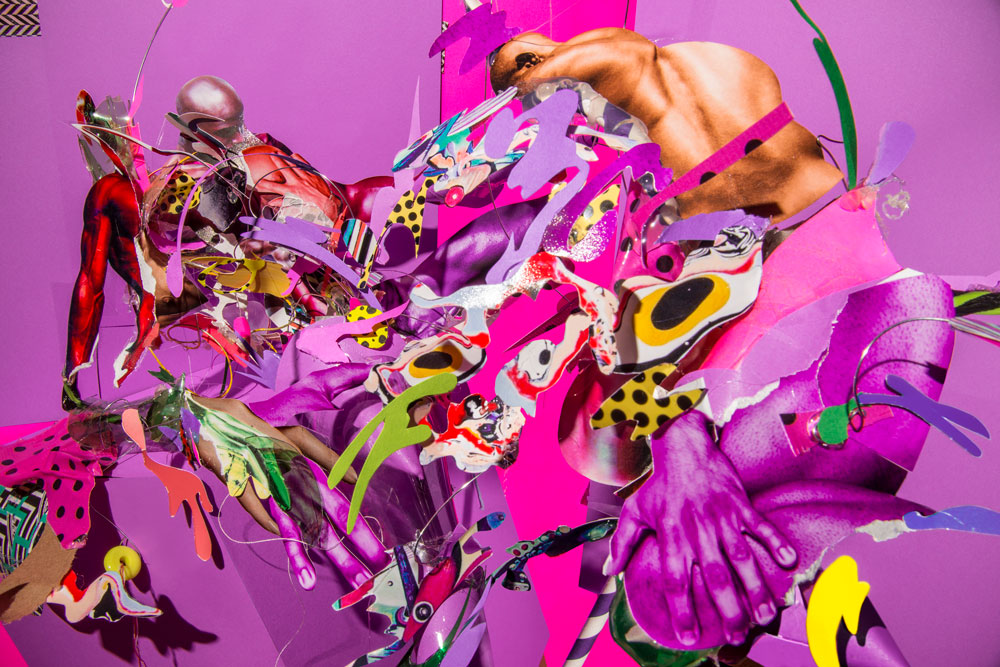 ...Disappearing Act... 2018
...Disappearing Act... 2018
When did you know you wanted to be a photographer?
I am a NJ artist and college professor. I was a pre-medicine major my first two years at Rutgers University, but I a visual arts minor and had been taking art classes seriously since high school. I knew I wanted to be an artist the summer between my sophomore and junior year while taking Summer Chemistry: I remember sitting in my dorm after receiving a C+ on an exam, and thinking “You’re NOT average, are GIFTED, you have SOMETHING. Why aren’t you doing something you love? Something special?” When I came back my Junior year, I flung myself entirely into my art and took 24 credits of Painting, Sculpture, and Photography classes for the next two years (students were discouraged from taking more than 20 credits at Rutgers). I loved the nuances, challenges, and limitations of each of these mediums, and for years I asked myself what would an art practice look like that encompass all of them?
Fast-forward to today: I use Photography to connect my Painting and Sculpture practices. I scavenge materials, which are then refigured, suspended, anchored, or overlaid into parallel universes using string and wire affixed to wooden armatures. Then I place these armatures against vibrant and textural backdrops. Finally, I photograph the tableau to generate a single image, where only shadows remain as remnants of his trace, and the multi-step process. My creative process is an experiment in itself, a performance that tests the understood limits of photography, perception, and patience, marrying analog and digital processes to produce imagery that is simultaneously nostalgic and afro-futuristic.
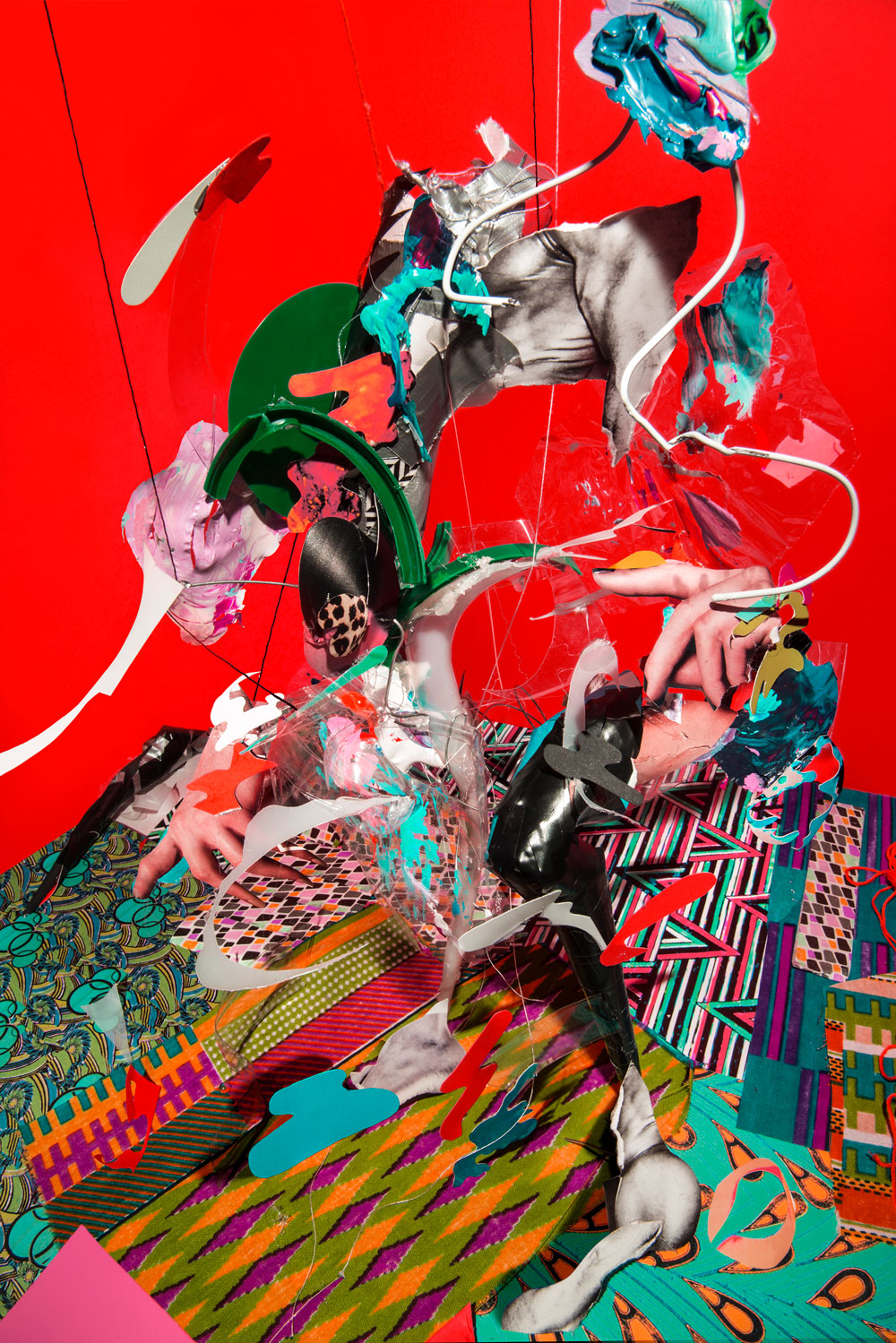 ...Stripped of Everything... Waiting to be Drained Again... 2018
...Stripped of Everything... Waiting to be Drained Again... 2018
"My style is based on the following: understanding the limits of photography, the relationship between photography and sculpture, perception and forced perspective, and patience."
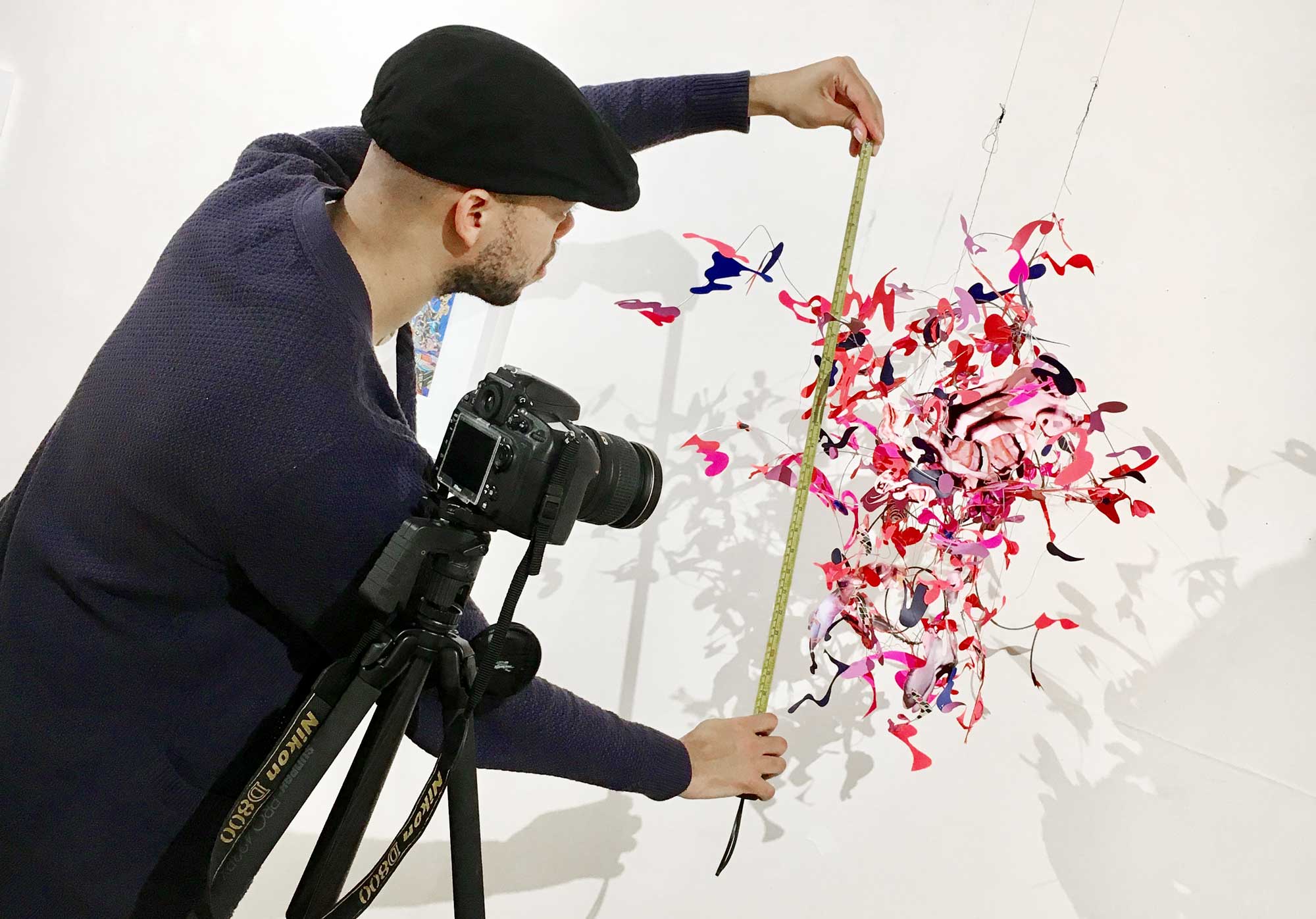 Ceaphas working in the studio
Ceaphas working in the studio
What are you currently working on and where did the inspiration for it come from?
I am using this summer to continue shooting and printing works from my on-going photo series, Phantom Limb, during my Rutgers Express Newark Residency last year. My goal is explore the shadowy underpinnings of yearning and loss. The yearning we have for what we cannot have is nothing compared to the pain we feel for the desired love one who got away. Eventually most people accept the relationship’s ending and find a way to move on. That is, until we have reason to hope again.
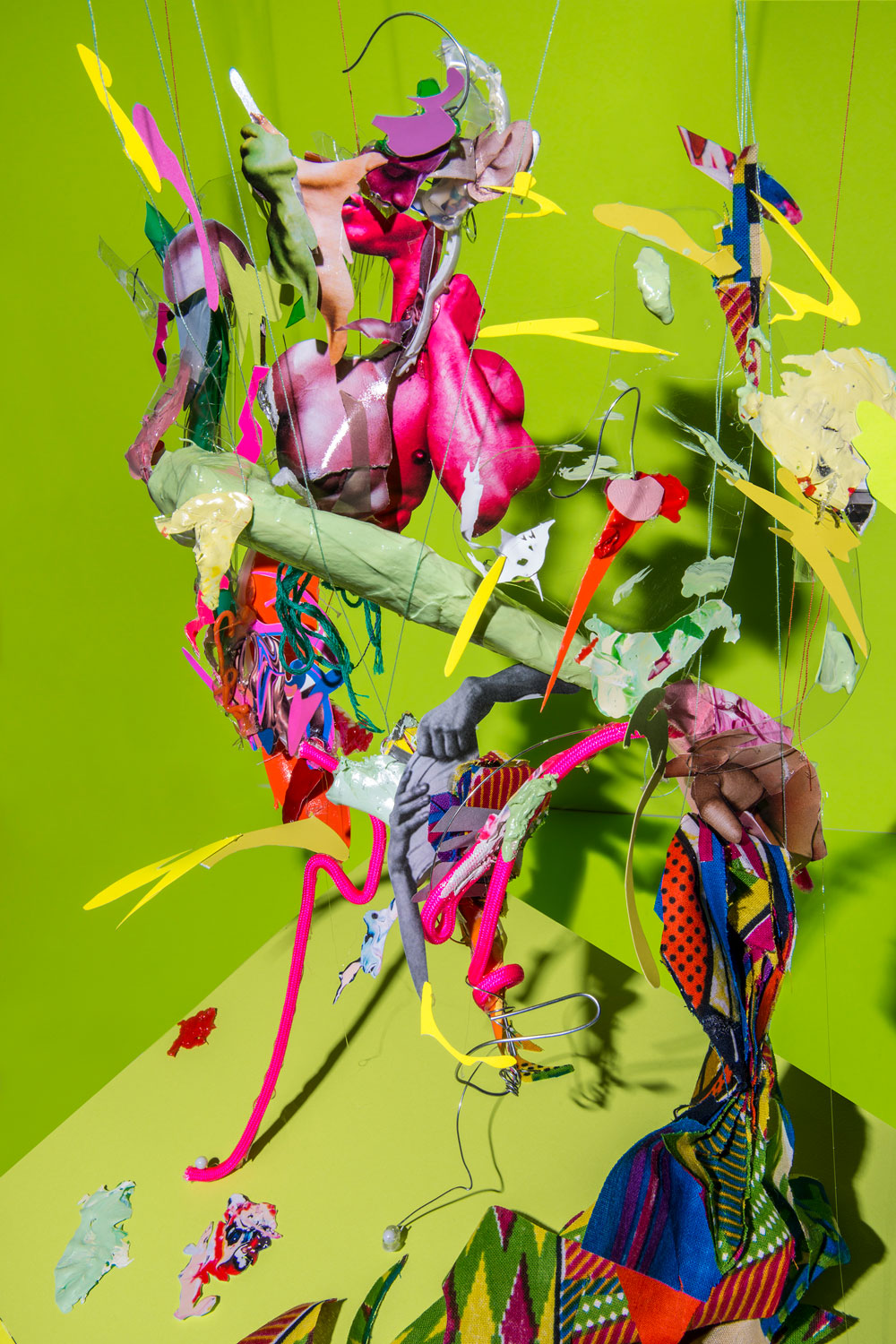 ...So What Causes It to Rush Back? And Is There Anyway to Prevent It?... Or At Least Make It Hurt A Little Less?... 2018
...So What Causes It to Rush Back? And Is There Anyway to Prevent It?... Or At Least Make It Hurt A Little Less?... 2018
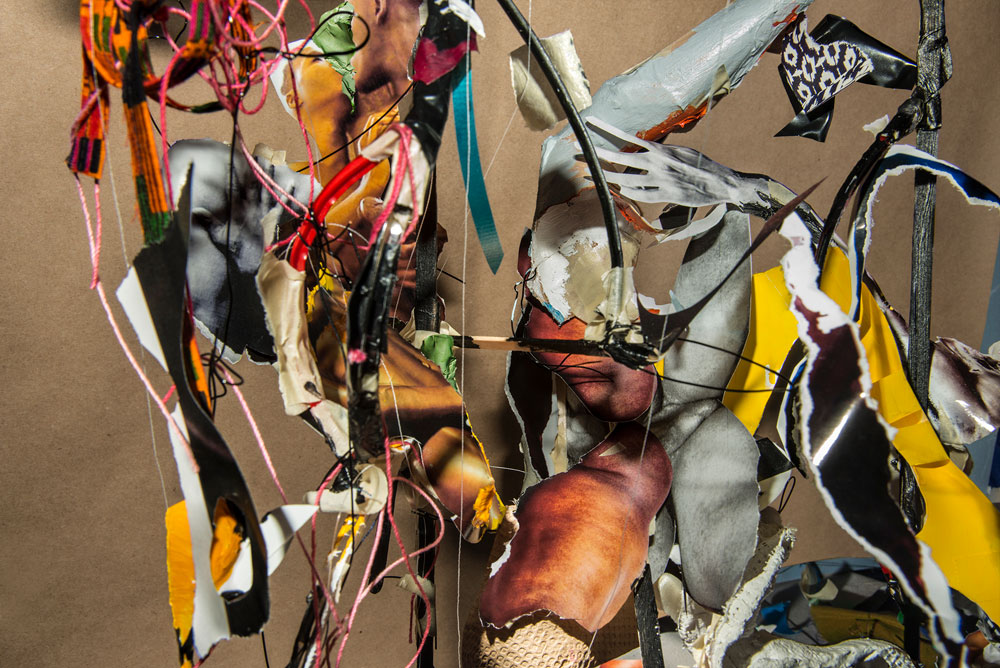 ...Head Over Heels... 2015
...Head Over Heels... 2015
Innovation does not only happen in the field of technology — it occurs everyday in an artist's practice. What do you do for inspiration?
Most of my inspiration comes to me while jogging and listening to music. I also visit fabric stores, thrift shops, and visit NYC galleries to keep myself current with other contemporary artists.
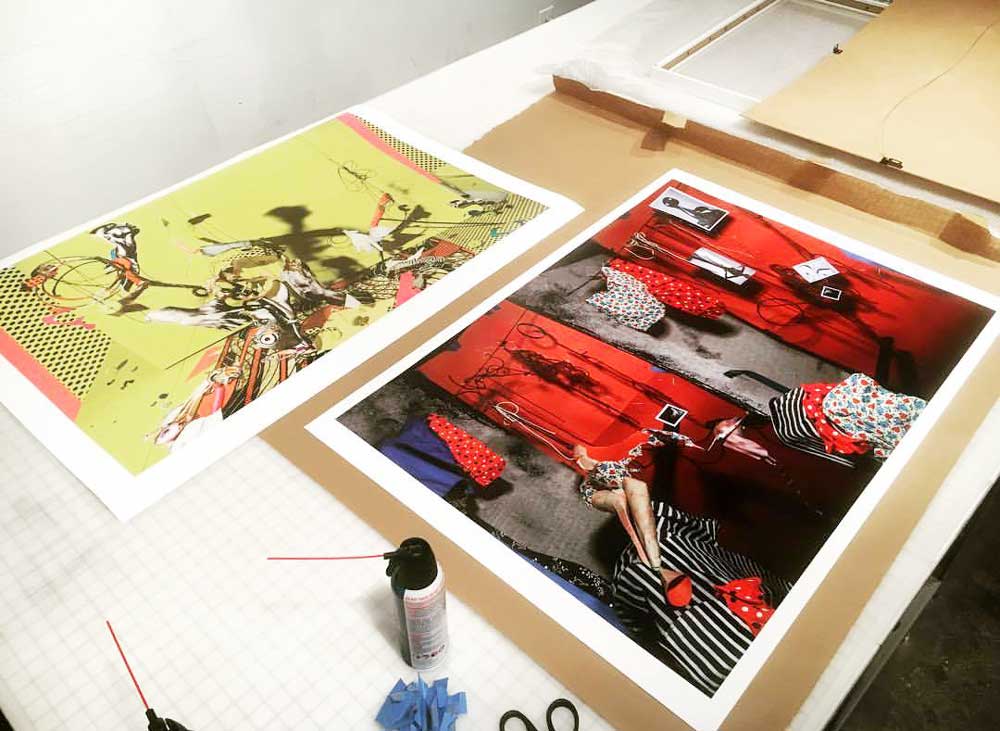
View of the studio and work in progress
Where do ideas start for you? In the studio or being in the world?
Either in the studio or in the world, depending on the project.
If it starts in the world, it starts by collecting materials, textiles, and found images. I am drawn to materials that are overlooked, discarded, and ordinary. These ordinary materials lend themselves to non-narrative context. Their ordinariness makes them neutral enough to function as elements in a world of rich and paradoxical visual ideas.
Regarding the found images, I look for scenes clipped from photographs rooted in someone else’s memories; and limbs dismembered from sex acts depicted in pornographic magazines or films. While watching pornography, I will stop the film at visual moments where the bodies are so intertwined that you are not sure where one body starts and another ends, or where you are not sure what is up or down. I take screenshots, archive them, and use them in my practice. After the tableaux have been photographed, they are dismantled and discarded. The photograph is the artwork itself, and I do not exhibit the sculptures.
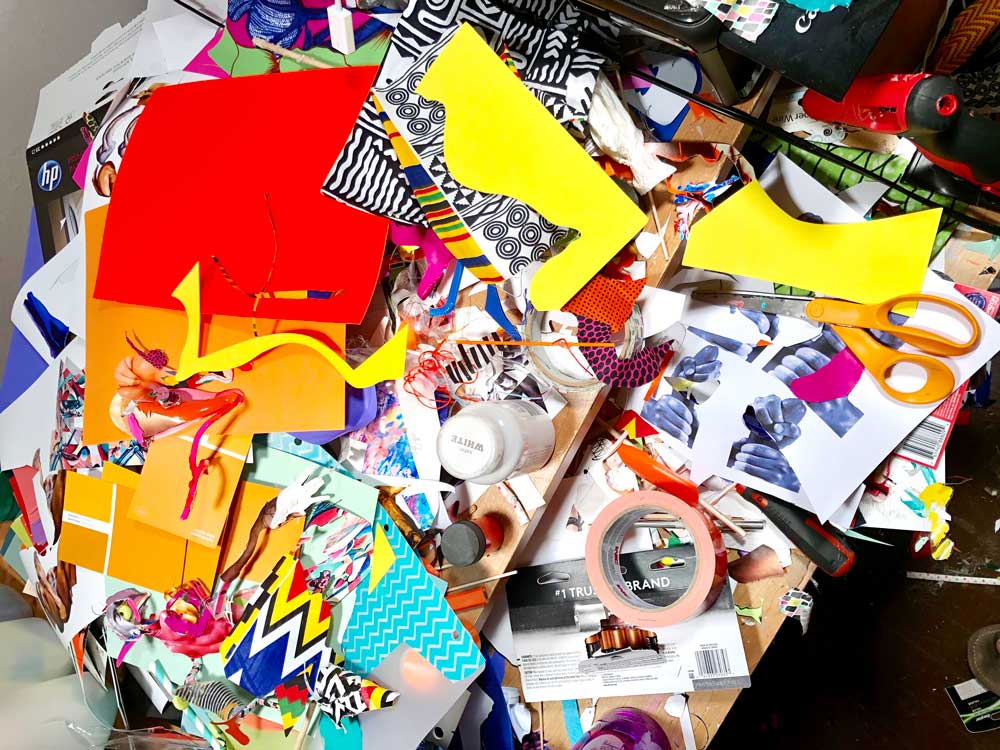
View of the studio and work in progress
If it starts in the studio, I usually find inspiration while cleaning every few months, or while working on a project in progress. I might be drawn to a discarded failed collage attempt, shredded papers or textiles, things on the floor (maybe an idea didn’t work a few months ago because it wasn’t time for that project).
Or sometimes, I might be halfway through a work in progress and tell myself “something is missing”, and look around the studio for that missing ingredient. This might ripping parts of completed sculpture from an earlier project, scrap materials, or things from the floor or trash.
 ...Who Really Controls the Strings... 2018
...Who Really Controls the Strings... 2018
How do you make your work? Where do you start and how does the process evolve?
My work starts quick paper maquettes or folding paper into abstract shapes. I try not to think about anything while working, and I try not to put any pressure on myself. I constantly shift and flip the forms while I sculpt them to keep my mind active and challenge my understanding of materiality and space. Every few minutes I will take quick camera phone shots just to see these forms are translated through a “photographic eye” versus my human eyes (this early phase helps me later on when I am staging all the materials for my medium-format camera). My style is based on the following: understanding the limits of photography, the relationship between photography and sculpture, perception and forced perspective, and patience.
Stylistically, I think of my works as figurative abstraction. I am interested in this push and pull between fantasy and reality, and coded figures and pure abstraction. However, I don’t think of my work as Photography; I think of them as images. I like watching viewers encountering my work in a gallery for the first time, and trying to decipher what are they looking at, what are all the parts, and then try to decipher if they are looking at a collage, a painting, or a photograph. Most of the time viewers think my work is traditional collage or Photoshop, but there is no Photoshop or manipulation whatsoever.

Working in the studio
Many artists live by their creative routines, do you have your own studio ritual? What does that look like for you?
I am most productive from 11pm through 4am since I get minimal email/text distractions. The first thing I do is turn on my hot glue gun and warm up my printer. I listen to my R&B Pandora station, anime, or court shows while working. I don’t keep a chair in my studio, otherwise it will slow down my activity. I only bring bottled water or coffee into my studio, because I literally have piles of scrap paper, fabric, etc. and no room for food.
Who are your biggest influences?
My studio practice aligns subtle references to 17th century still life structures and compositions, Surrealist painting and sculpture, Constructivist architecture, and Formalist photography. I am drawn to artists, such as Irving Penn, Hans Bellmer, Zeke Berman, Joan Miró and Salvador Dali, who demonstrate an extraordinary capacity for inventiveness, improvisation, imagination, and undermining rationality.
 ...Walk on By... 2018
...Walk on By... 2018
Are there books or films that are an important source of inspiration?
Yoshitaka Amano’s still- and time-based works, especially 1001 Nights, Anthony Burgess’s novel A Clockwork Orange, Walt Disney & Salvador Dali animated film Destino, and The Quay Brothers animated film Impressions. Gay magazines and pornography (such as Black Breeders) are also important sources or inspiration.
How will Innovate Grant contribute to your practice?
The Innovate Grant will help fund new studio equipment, such as photo lighting equipment and a flat file.
What’s the best piece of advice you’ve been given?
The best advice I received was from Terry Adkins, one of my graduate professors and mentors from University of Pennsylvania:
“Don’t be derivative, and don’t perform Blackness or Sexuality”.
As an artist who is both Black and Queer, at times I have felt like I needed to fit neatly into curator’s or gallerist’s understanding of Blackness or Queerness for the sake of an exhibition. Or I might catch myself slipping into visual vocabulary that is one-note or cliché. I have to remind myself “What would Terry say?”.
What is the best advice you would give to other artists?
Diversify your practice, techniques, and inspirational sources. And you feel like you have figured things out, challenge what you think you understand. Always try to learn, experiment, fail, and grow.
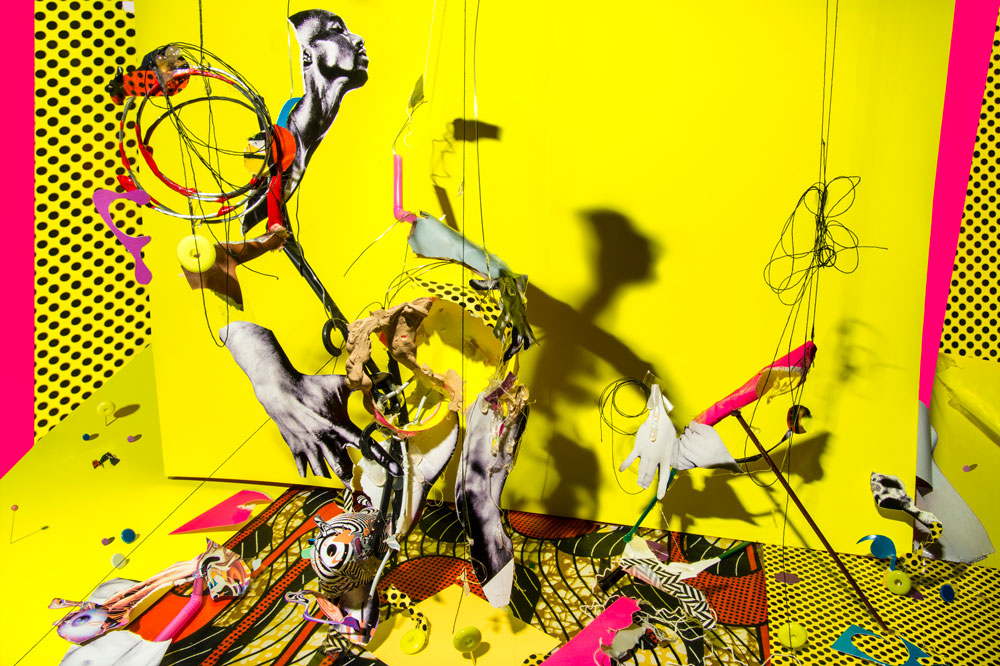
...Nothing More than Dreams... Sweet Melodies Reciting Words that Will Never be Said... 2017
Stay up to date with Ceaphas Stubbs
Instagram @c.3aphas
Brooklyn Rail Review Ceaphas Stubbs : Phantom Limb
www.ceaphas.com
